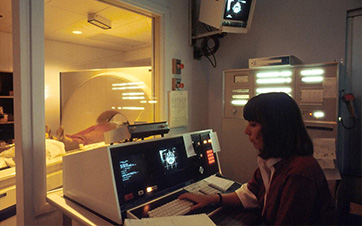
This article is your guide to navigating the often overwhelming world of brain tumor diagnosis by shedding light on the unique characteristics of two distinct types of brain tumors. By understanding the differences, patients and caregivers can take a proactive step in their healthcare journey, armed with knowledge that empowers and guides.
Let's unravel this puzzle together and discover what lies beneath the surface of Schwannoma vs Neurofibroma.
What is a Schwannoma?
A Schwannoma is a type of tumor that originates from Schwann cells. These tumors are generally benign which means they are not cancerous and do not spread to other parts of the body.
Schwannomas typically develop in the cranial nerves, spinal nerves, and peripheral nerves. Their growth is usually slow, and they often remain undetected until they reach a size that causes noticeable symptoms.
Symptoms and Diagnosis
The symptoms of a Schwannoma vary depending on the tumor's location. Common symptoms include numbness, weakness, or pain in the affected area.
For instance, if the tumor is on a cranial nerve, it might lead to hearing loss or balance issues. When a Schwannoma develops in the spine, it can cause back pain or sciatica-like symptoms.
Diagnosing Schwannoma involves a combination of methods. Physicians usually start with a physical examination, followed by imaging tests such as MRI or CT scans.
In some cases, a biopsy may be performed to confirm the diagnosis, though this is less common due to the risk of nerve damage.
Treatment Options
The approach to Schwannoma treatments depends on several factors, including the tumor's size, location, and the patient's overall health. Observation is often the first step, especially if the tumor is small and not causing significant symptoms.
This "watchful waiting" strategy involves regular monitoring to track the tumor's growth.
Surgical removal is the most common treatment for larger or symptomatic Schwannomas. The goal of surgery is to remove as much of the tumor as possible without damaging surrounding nerves. However, surgery can be challenging, particularly if the tumor is near vital structures.
Radiation therapy is another option, often used when surgical removal is not feasible. This treatment involves targeting the tumor with high-energy beams to reduce its size or stop its growth.
Radiation therapy is particularly beneficial for patients who cannot undergo surgery due to other health issues.
What is a Neurofibroma?
Neurofibroma is a type of tumor that grows on the nerves throughout the body. These tumors come from the nerve tissue itself and can be found on or under the skin or deeper in the body.
Unlike Schwannomas, Neurofibromas can occur as part of a genetic condition called Neurofibromatosis, particularly type 1 (NF1), but they can also appear in people without this condition.
Most Neurofibromas are benign, but in rare cases, they can become cancerous. They grow at a slow rate and can vary in size.
Symptoms and Diagnosis
Neurofibroma symptoms are diverse, depending on the tumor's size and location. Common signs include small bumps on or under the skin, pain or tingling, and in some cases, changes in skin color over the tumor.
When Neurofibromas grow on larger nerves, they might cause more noticeable problems like weakness or numbness in the limbs.
For diagnosis, doctors typically start with a physical exam, checking the skin and feeling for lumps. If Neurofibroma is suspected, imaging tests are crucial to see the tumors and understand their impact on surrounding tissues.
Genetic testing might also be recommended, especially if NF1 is suspected.
Treatment Options
The treatment for Neurofibromas varies based on the tumor's size, location, and symptoms. Many Neurofibromas don't need immediate treatment and can be monitored for changes.
When treatment is needed, surgery is the most common option. It's aimed at removing the tumor and relieving any symptoms it's causing.
However, surgery can be tricky, especially for tumors that are deep or intertwined with nerves. In these cases, doctors have to balance removing as much of the tumor as possible with the risk of nerve damage.
Another option is medication. In recent years, drugs that target specific pathways in tumor growth have shown promise in treating Neurofibromas, especially in people with NF1. These medications can help shrink the tumors or slow their growth.
Radiation therapy is less common for Neurofibromas but might be used in specific cases, such as when the tumor is hard to remove with surgery.
Schwannoma vs Neurofibroma: Key Differences
Both are types of tumors that develop from nerve tissue, but they have distinct characteristics.
Schwannomas are typically solitary tumors that originate from the Schwann cells. They are most commonly found in the cranial, spinal, and peripheral nerves. These tumors tend to grow slowly and usually remain within a well-defined area which makes them easier to remove surgically.
In contrast, Neurofibromas arise from multiple types of cells in the nervous system and often involve more than just the nerve cells. They can occur anywhere in the body and are sometimes associated with the genetic condition Neurofibromatosis.
Unlike Schwannomas, Neurofibromas can be multiple and may grow on or under the skin or deeper within the body. They have a more varied growth pattern and can be more challenging to treat.
When it comes to treating a tumor, Schwannomas generally respond well to surgical removal, with a high chance of complete recovery without recurrence. However, the treatment of Neurofibromas can be more complicated, especially in cases of NF1. Surgery, while effective in some cases, carries a higher risk due to the potential involvement of multiple nerve fibers.
A Partner in Your Journey
We've explored the nuances of Schwannoma vs Neurofibroma by demystifying their symptoms, treatments, and the unique journeys patients face with each diagnosis. At the Connecticut Brain Tumor Alliance, Inc., we understand the gravity of such diagnoses and are dedicated to providing not just information, but hope and tangible support.
Our commitment is to advance research and improve the quality of care for every individual facing these challenges. If you or a loved one are navigating this path, remember, you're not alone. Connect with us for support, guidance, and to join a community that fights together.
Disclaimer
All content and information on this website is for informational and educational purposes only and nothing herein shall be construed as medical advice. Always consult your medical provider for your particular needs and circumstances prior to making any medical decisions.

